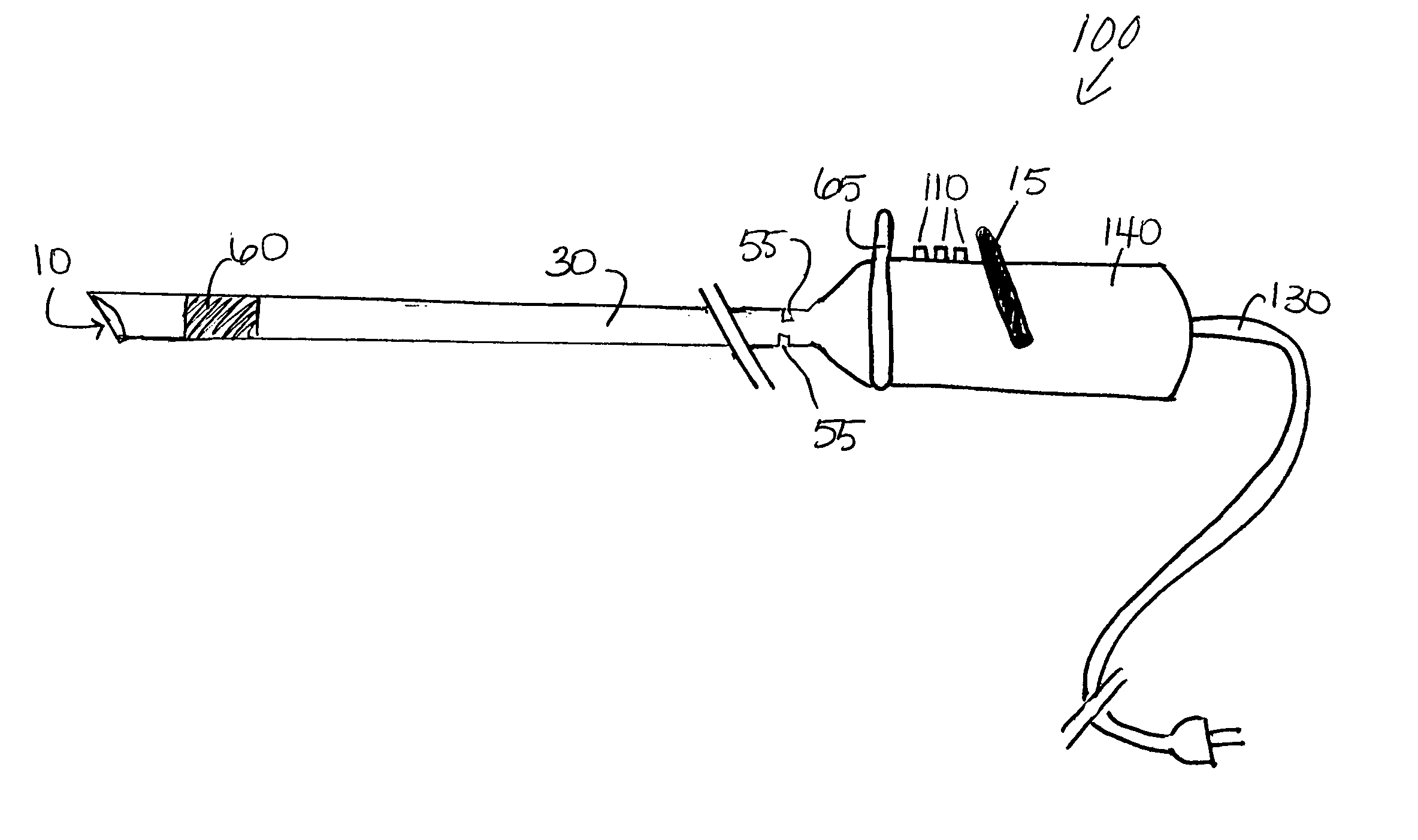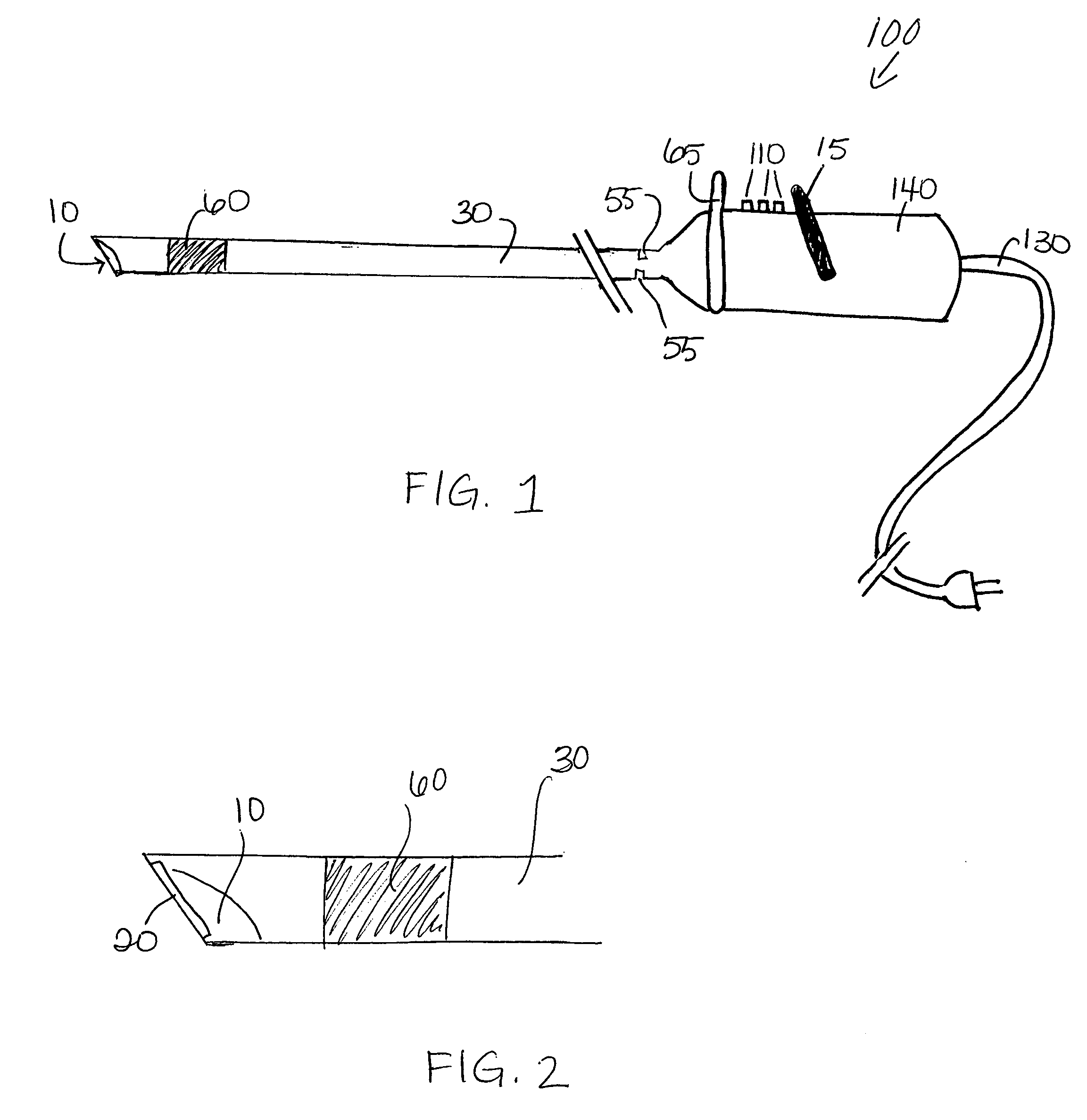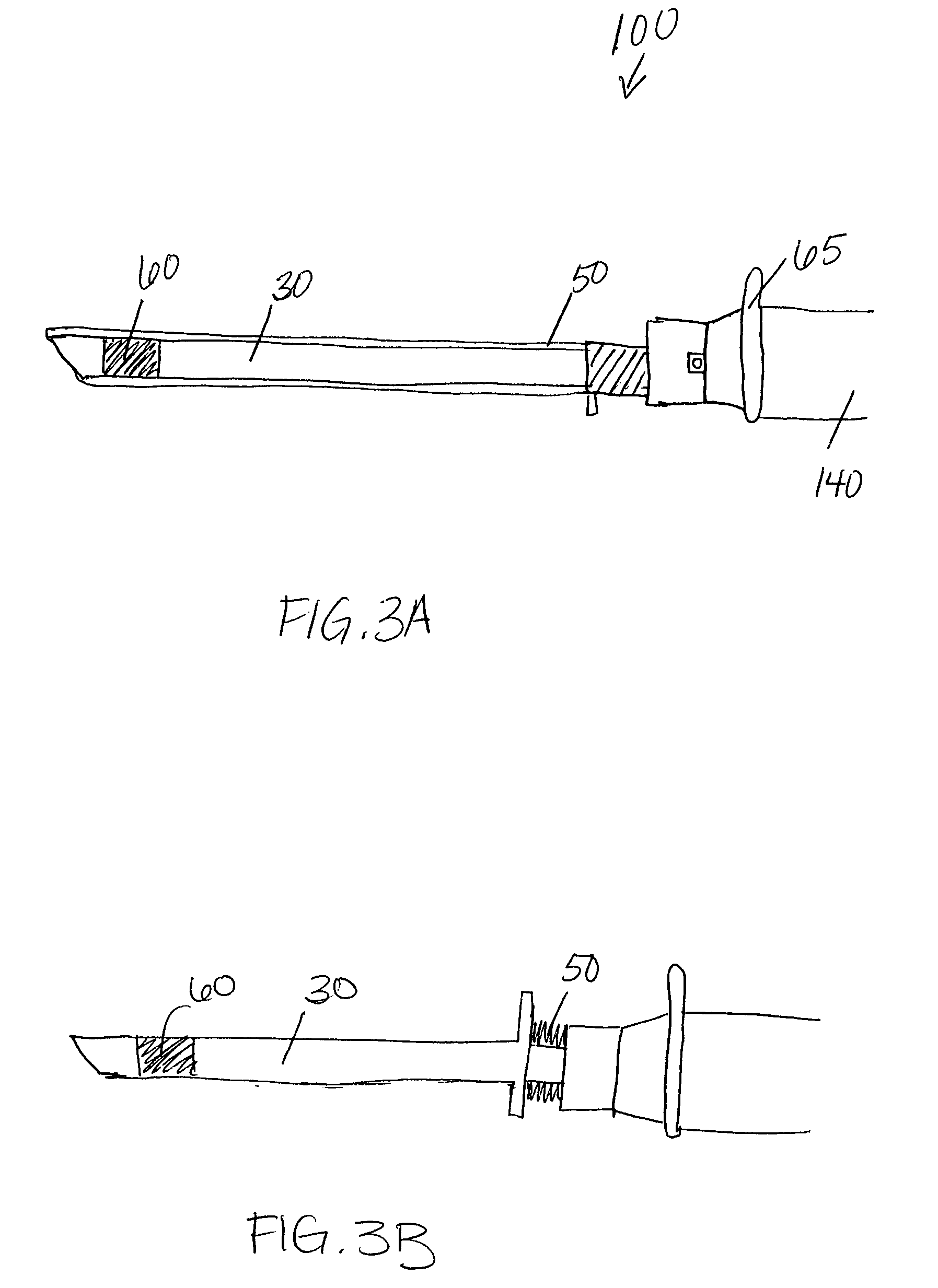Deflectable tip videoarthroscope
- Summary
- Abstract
- Description
- Claims
- Application Information
AI Technical Summary
Benefits of technology
Problems solved by technology
Method used
Image
Examples
Embodiment Construction
[0025] The present invention provides a 30 degree angled deflectable tip videoarthroscope using a miniaturized CCD with four-way angulations mounted on the tip of the instrument. Preferably, the deflectable tip videoarthroscope of the present invention may be provided with a distal window made of a thin material (such as polycarbonate or acrylic) or a glass (sapphire or other) with very high light transmission properties, connected to a sheathing system that is disposable or limited-reusable. This replaceable window / sheath could be discarded if a shaver burr or ablation probe contacts the lens. This design would protect the distal window of the videoarthroscope during use and would reduce scope repair costs and system down-time. Preferably, the deflectable tip videoarthroscope may further comprise a steering wheel, which allows 360 degree rotation of the instrument during arthroscopic procedures with an integrated electronic of manual CCD horizontal image stabilization system.
[0026...
PUM
 Login to View More
Login to View More Abstract
Description
Claims
Application Information
 Login to View More
Login to View More - R&D
- Intellectual Property
- Life Sciences
- Materials
- Tech Scout
- Unparalleled Data Quality
- Higher Quality Content
- 60% Fewer Hallucinations
Browse by: Latest US Patents, China's latest patents, Technical Efficacy Thesaurus, Application Domain, Technology Topic, Popular Technical Reports.
© 2025 PatSnap. All rights reserved.Legal|Privacy policy|Modern Slavery Act Transparency Statement|Sitemap|About US| Contact US: help@patsnap.com



